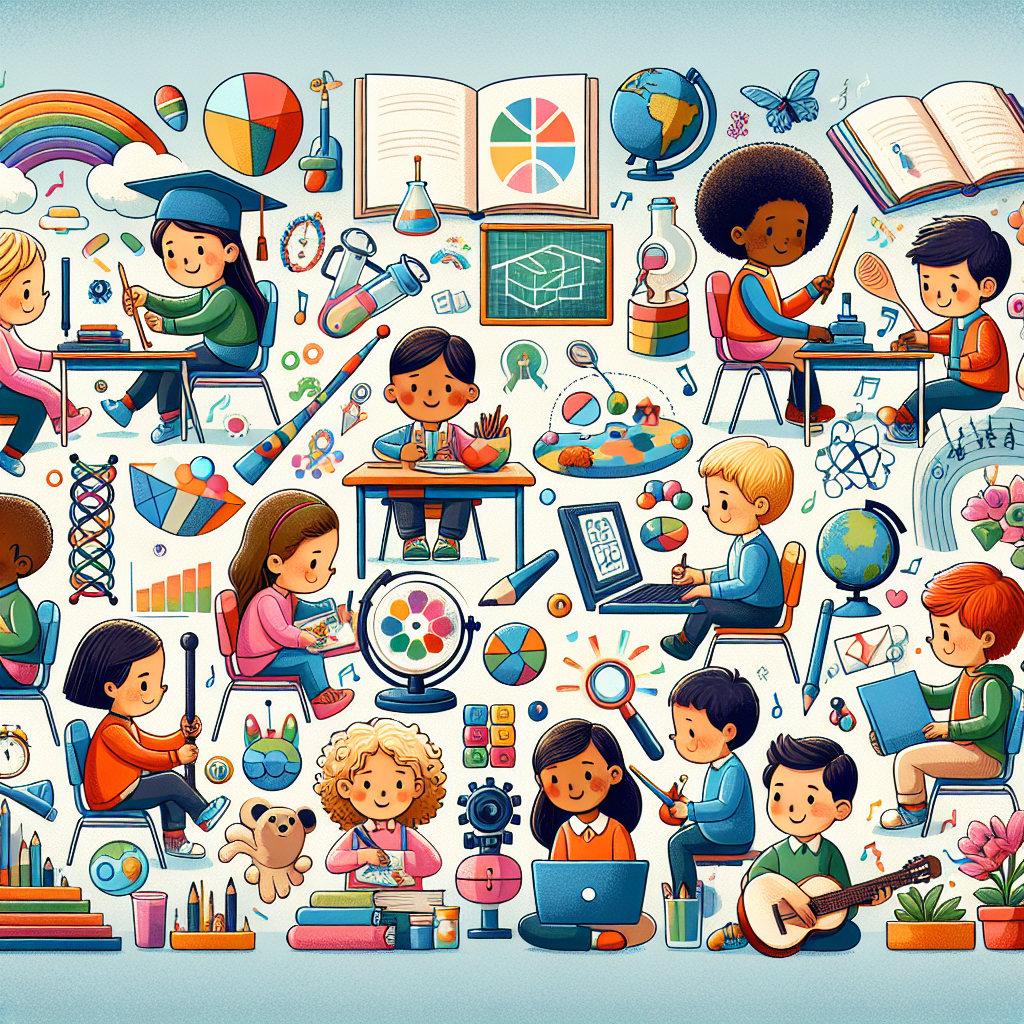Introduction
In today’s rapidly evolving world, the need for tailored educational approaches has never been more crucial. "The Gifted Education Spectrum: From Early Identification to Lifelong Learning" serves as a guiding light for educators, parents, and policymakers alike. Understanding how to identify and nurture giftedness from an early age can lead to remarkable outcomes not just in academic settings but throughout a person’s life. Gifted learners thrive when their unique needs are met with specialized strategies, fostering an environment where they can truly excel.
Understanding Giftedness: A Holistic Approach
Giftedness is often misconceived as merely excelling in academic subjects. Instead, it encompasses a broad spectrum that includes creativity, leadership, and emotional intelligence. This section explores the multifaceted nature of giftedness and the different domains in which gifted children can excel.
Theories of Giftedness
-
Renzulli’s Three-Ring Conception: Renzulli’s model emphasizes the intersection of three characteristics: above-average ability, task commitment, and creativity. Understanding these elements can help educators pinpoint gifted students in diverse areas.
- Gardner’s Multiple Intelligences: Howard Gardner’s theory broadens the scope of giftedness to include various types of intelligence, such as musical, kinesthetic, and interpersonal skills. This perspective allows for greater recognition of talents that traditional assessments might overlook.
Identifying Gifted Learners Early
Early identification is paramount in the Gifted Education Spectrum. The earlier we recognize a child’s potential, the sooner we can implement strategies that cater to their unique learning needs.
-
Screening and Assessment Tools: Various assessments, such as IQ tests, standardized academic tests, and behavioral checklists, can provide insights into a child’s abilities. However, these should be complemented with teacher observations and parent input to create a holistic view.
- Case Study: Early Identification at Sunnydale School
At Sunnydale, teachers utilized a combination of standardized tests and anecdotal evidence from parents to identify gifted students. They discovered that some students who did not excel in traditional tests showed remarkable potential in creative writing and arts.
| Assessment Type | Description |
|---|---|
| IQ Tests | Measure cognitive abilities |
| Standardized Tests | Assess academic performance |
| Behavioral Checklists | Evaluate creativity and problem-solving skills |
Designing Effective Gifted Education Programs
Once gifted learners are identified, the next step is creating effective educational programs tailored to their needs. Here are several approaches widely recognized in the field.
Differentiated Instruction
Differentiated instruction involves adjusting teaching strategies and content to meet the diverse learning needs within a classroom. For gifted learners, this may mean offering advanced materials or alternative projects that challenge them.
Acceleration and Compacting Curriculums
Accelerating a gifted student’s learning can involve skipping grades or compacting curriculum content to cover material at a faster pace. This ensures that students remain engaged and challenged.
- Case Study: Advanced Learning Initiative in Middlewood District
The Middlewood District adopted an advanced learning initiative that allowed students to pursue subjects at an accelerated pace. As a result, students expressed increased motivation and improved academic performance.
Enrichment Opportunities
Enrichment can take many forms, from extracurricular activities and specialized clubs to community partnerships that allow gifted students to explore their interests deeply.
- Example: STEM Clubs and Creative Mornings
At Maplewood Elementary, after-school programs focusing on STEM and creative arts have seen high participation rates among gifted students. These clubs not only foster teamwork but also ignite a passion for learning beyond the classroom walls.
| Program Type | Key Benefits |
|---|---|
| STEM Clubs | Encourages problem-solving and analytics |
| Art Programs | Boosts creativity and emotional expression |
Lifelong Learning: Supporting Gifted Individuals Beyond School
The Gifted Education Spectrum extends beyond school years into adulthood. Fostering a lifelong love for learning is vital for gifted individuals to continue thriving.
The Role of Mentorship
Mentorship plays a crucial role in guiding gifted individuals through their personal and professional growth. Having an experienced mentor can provide inspiration, resources, and insights that empower gifted individuals to pursue their passions.
- Case Study: Mentorship Programs in Higher Education
Numerous universities have implemented mentorship programs connecting gifted students with professionals in their fields of interest. These partnerships have led to enhanced career opportunities and greater academic success.
Community and Networking
Encouraging gifted individuals to engage with their communities through workshops, forums, and social networks can reinforce their learning journey. Building a network allows them to share experiences, challenges, and advice.
Conclusion
The Gifted Education Spectrum: From Early Identification to Lifelong Learning highlights the importance of recognizing and supporting gifted individuals from a young age. Whether through tailored educational approaches, mentorship, or community-building, there are countless ways to nurture their potential. By doing so, we foster a society that values and cultivates innovation, creativity, and intellect.
FAQs
-
What defines a gifted learner?
A gifted learner typically demonstrates exceptional ability in one or more areas, including academics, creativity, leadership, or arts. Identification may vary based on educational and cultural contexts. -
How can I identify if my child is gifted?
Observing your child’s behaviors, interests, and learning pace is a good start. Collaborate with educators who can administer appropriate assessments for a more comprehensive evaluation. -
What types of programs are available for gifted education?
Programs range from differentiated instruction and acceleration to enrichment activities, each designed to meet the unique needs of gifted learners. -
How can I support my gifted child at home?
Encourage curiosity, provide challenging materials, and engage your child in discussions that stimulate their interests. Offer diverse experiences to enrich their understanding of the world. - Is gifted education only for academic subjects?
No, gifted education encompasses all areas of talent, including the arts, social skills, and emotional intelligence. Programs should reflect this diversity for comprehensive support.
The journey through the Gifted Education Spectrum is as unique as each gifted individual. By embracing their potential early on and nurturing their gifts throughout life, we contribute to a brighter future for all.

